This post is part of a Series of post which I’m describing a clock-in/out system
if you want to read more you can read the following posts:
- Part 1. Clock-in/out System: Diagram.
- Part 2. Clock-in/out System: Basic backend — AuthModule.
- Part 3. Clock-in/out System: Basic backend — UsersModule.
- Part 4. Clock-in/out System: Basic backend- AppModule.
- Part 5. Clock-in/out System: Seed Database and migration data
- Part 6. Clock-in/out System: Basic frontend.
- Part 7. Clock-in/out System: Deploy backend (nestJS) using docker/docker-compose.
- Part 8. Clock-in/out System: Deploy frontend (Angular 2+) using environments.
- Part 9. Testing: Backend Testing — Unit Testing - Services
- Part 10. Testing: Backend Testing — Unit Testing - Controllers
- Part 11. Testing: Backend Testing — E2E Testing
- Part 12. Testing: Frontend Testing — Unit Testing
- Part 13. Testing: Frontend Testing — Integration Testing
In the previous post, I presented the basic backend structure and the first
module (AuthModule). So, I recommend you that you read that post before this
because you can understand the whole system.
Originally published at www.carloscaballero.io on December 3, 2018.
This post will be presented the UsersModule which is used to manage the user
information. The service UserService provide two important methods:
- getUsersWithoutKey
- addUser
These methods are used to know that user have not a valid ID Card and add an
user to the system.
So, the first step is show the structure of files of the UsersModule which
is shown in Figure 1.
In the develop of this module, we’ve use the same directory structure that the
used in AuthModule but we’ve a new directory called controllers which is
used to communicate this module with the exterior using an APIRestful.
Furthermore, you can see two entities because in this module we need two tables
(User and UserSchedule).
So, the module’s file is shown in the following code:
This module only import DatabaseModule to connect with our Postgres using
TypeORM and export the UserService which is used in AppController. In
this module is defined the controller UserController which will be used to
communicate this module with the exterior.
Entities
In this module we need use two entities:
- User: This entity define the user information.
- Scheduler: This entity define the scheduler of the user (that’s a weak-entity).
So, the first step to define the entities is defined the provider which allow
used the UserRepository in our services by injection.
So, the first entity is user which is defined by the following fields:
- uid: UID of the user, in this case is a string by the “surname, name” of the user.
- name: Name of the user, this field is used to show the name in a screen.
- auth: That’s the relation between the table Auth and Users. This field is a list of Authentication of the user.
- key: The key which is assign to any user.
- schedule: That’s one of the most important field because it is the relation between the user and their schedule. The second entity of the user’s module is that.
The UserSchedule entity is used to reflect the fact that each session in
which the user must be in the building. The fields which are store in this table
are the following:
- UID: The UserSchedule’s UID. This field is automatically generated by the database.
- day: The day of the week in which the user must be in the building (from 0 to 6 is the equivalent to from Sunday to Saturday).
- hour: The hour of the day in which the user must be in the building (from 0 to 11 *is the equivalent to *from 8:15 to 22.10, but the relation is not lineal but there is a function which do that task).
- room: The space in which the user must be in that hour.
- user: The relation between the table UserSchedule and User. Many UserSchedule are related with a User.
Finally, the system is composed of 3 tables:
- User: The information about the users in the system and their keys.
- User-Schedule: The information about the schedule and rooms where the user must be.
- Auth: The information about the clock-in/out (included the timestamp)
Constants and DTOs
The next section is very easy as in the previously post. In this section we
define the constants and DTOs to obtain a better code. The constants are used to
clean the code of strings or numbers while DTOs are used to validate the user
from client-side.
In the file user.constants.ts you can see several arrays:
- SCHEDULE_EXCLUDE: The list of scheduler which will be exclude to the list (must the user be in the building).
- SCHEDULE_HOURS: The different hours to start and end the session of the user in
- Several constants to export formats of moment or the first and last hour in different work shifts.
The user.dto file is very simple too. In this file you can see the
definition of a class in which is defined two fields (UID and name).
Controllers
Now is the moment to introduced the user's controller. In this file you can see
that the controller is called user and two verbs are used:
- GET /user: This method invoke the method getUsersWithoutKey from the service to obtain all users which are not key in the system (that’s used to fill the information from a client-side).
- POST /user: This method invoke the method addUser from the service to add the key to an user. In fact, the body of the POST should be an uid and key.
Services
Finally, the most important of this module is the service due to logic of module
is inside this file. So, the UserService has three important methods:
- getUsersWithoutKey: In this method the return value is a Promise of UserEntity[] from TypeORM. So, the target of this method is invoke the correct SELECT sentence using the ORM which consist in all users which are NULL the key value.
- addUser: In this method the return value is a Promise which is returned from the method save of TypeORM. So, addUser is a wrapper of TypeORM which is a wrapper of the INSERT/UPDATE sentence.
- getUsersWorkingNow: This method are not used inside the UsersModule but that is used from AppController. This method return a Promise of UsersEntity[] which is componed of all users which must be in the building in now moment. This method used the library MomentJS. This method would be done in bad-code with a lot of code smells but I’ve preferred used several variables to clean the code. Furthermore, I’ve used a private function isMorning which allow to me know if the system is in the morning of afternoon. That’s because there are several users which must be in the building in several hours in morning and several hours in afternoon. The Users returned contains the list of authentications in the day (using lower and upper limits).
Resume
In this post I’ve explain my UsersModule which is very simple because I’m
using clean code in my coding. This module is used to save the information about
users and clock-in/out. The method getUsersMustBeWorkingNow is the main method
of the system because this method return the list of users which must be in the
building using several constraints. This constraints are easily customisable.
In the following post of this series I’m going to explain the AppModule which
communicate the client-side with the server-side and the modules of the
server-side between them.
The GitHub project is
https://github.com/Caballerog/clock-in-out.
The GitHub branch of this post is
https://github.com/Caballerog/clock-in-out/tree/part3-basic-backend-users.
Originally published at www.carloscaballero.io on December 3, 2018.

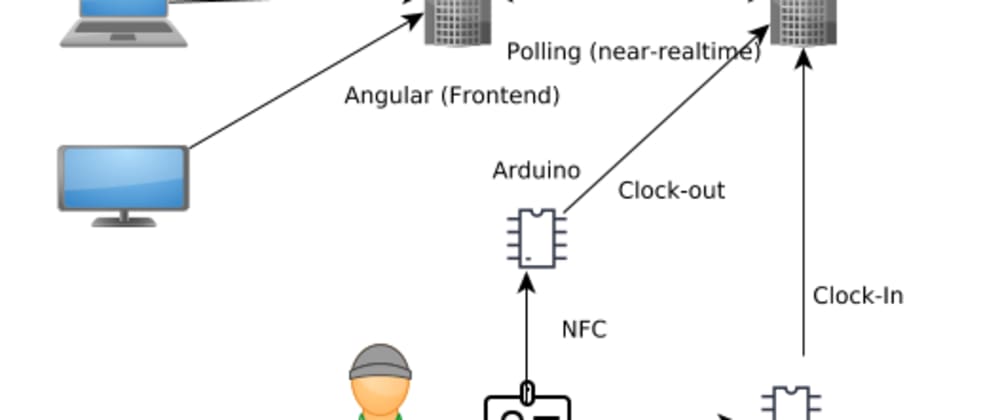

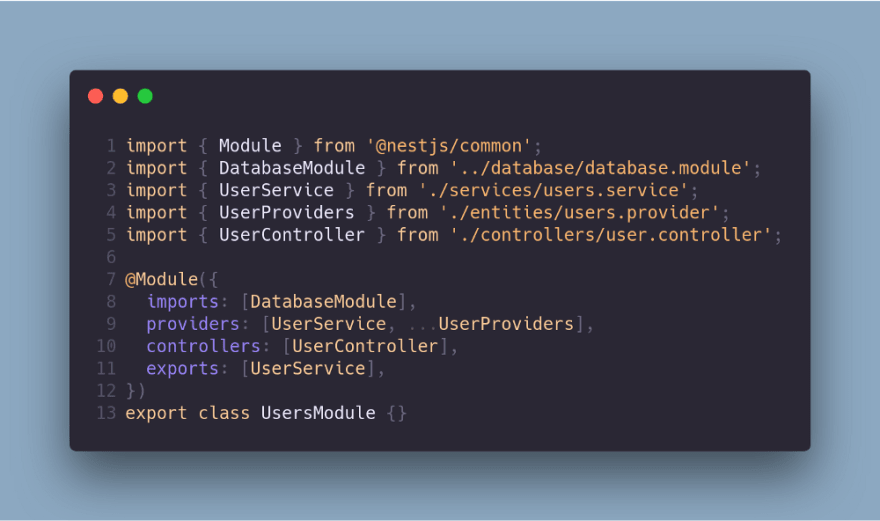



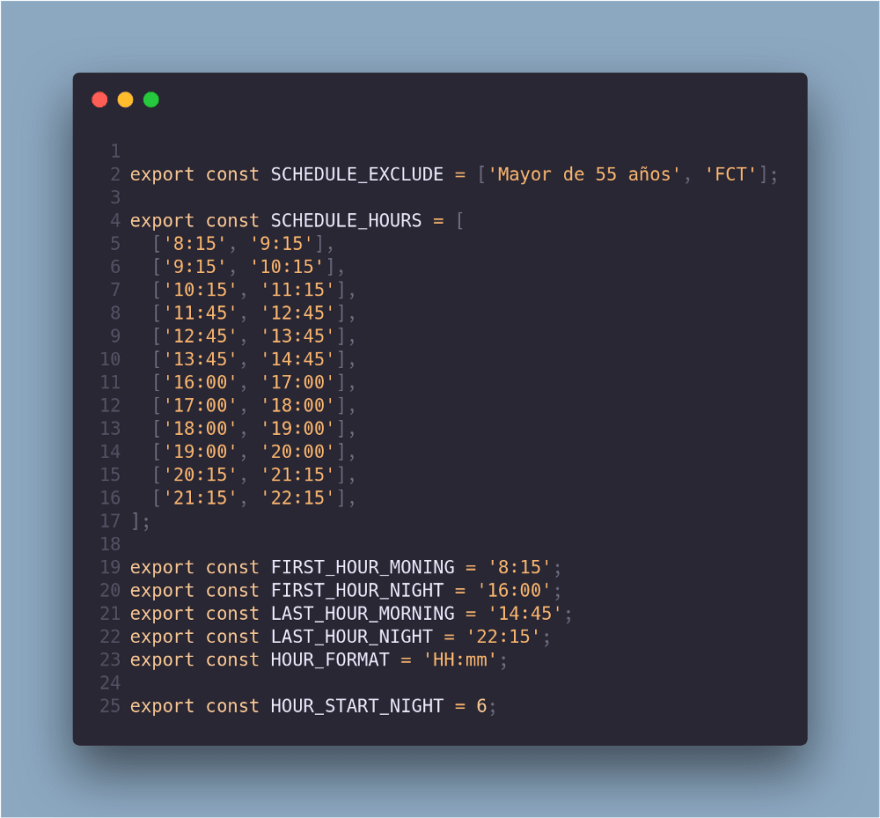

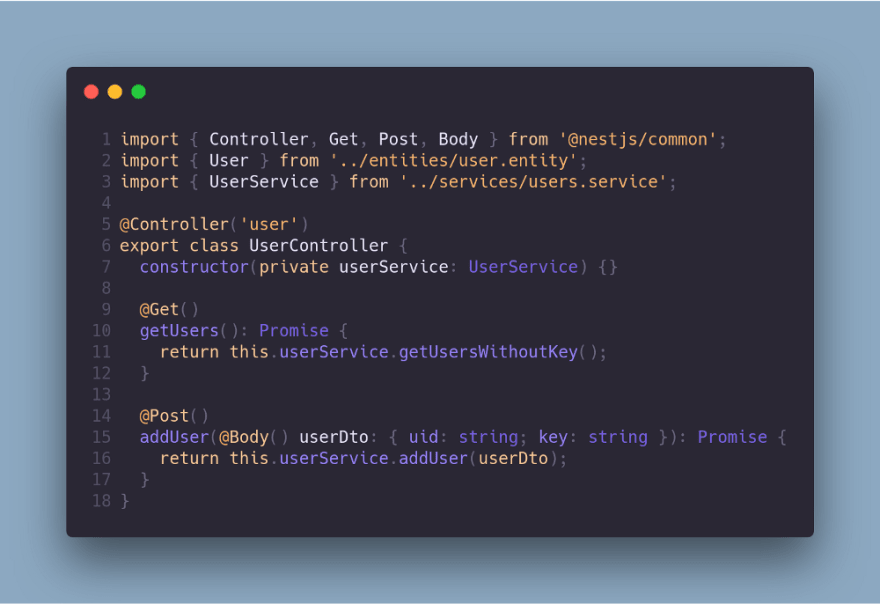
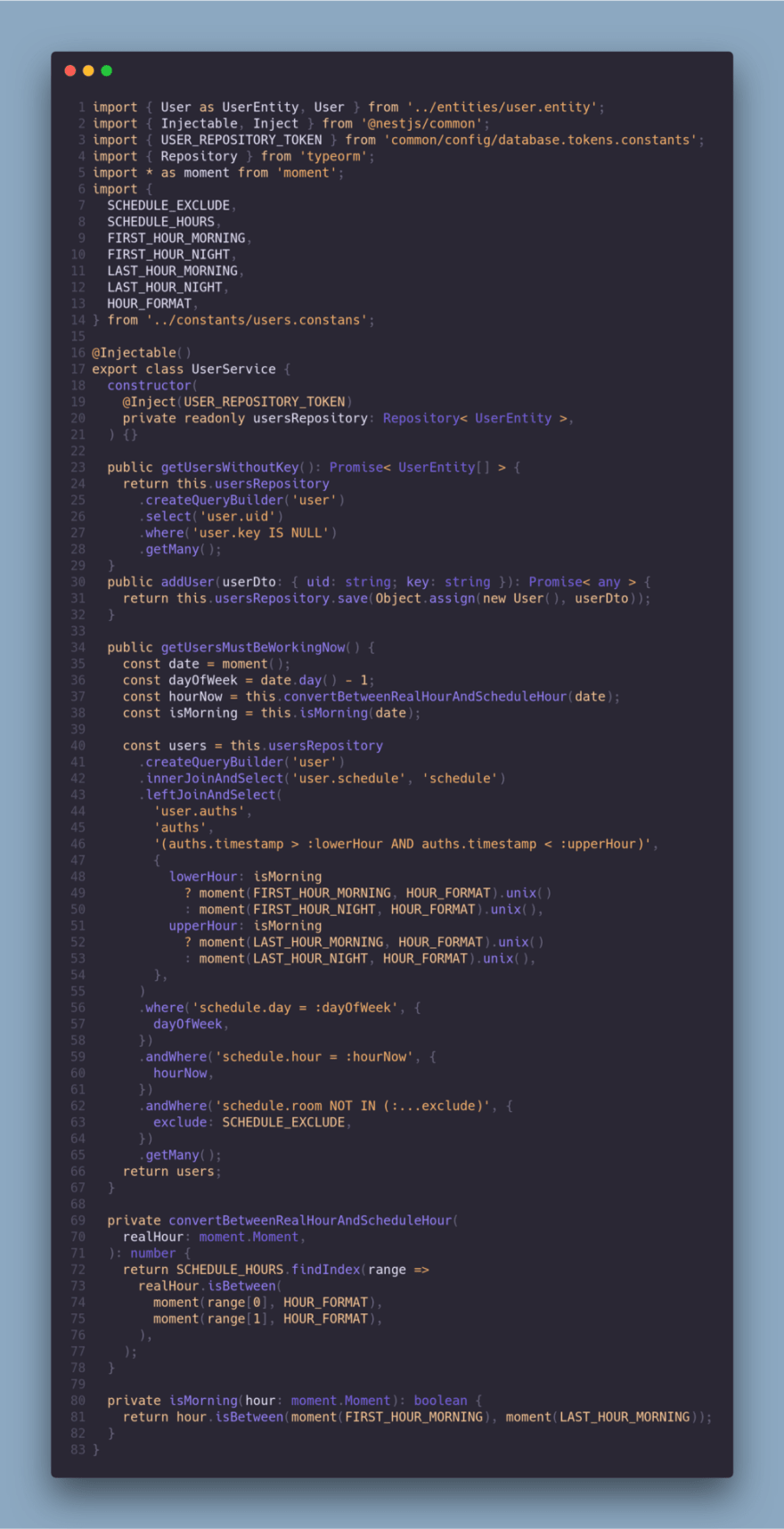





Oldest comments (1)
Hola carlos, espero te encuentres bien. Estoy haciendo el codigo, a penas voy aca en la parte 3 y quisiera saber en que momento creaste AUTH_REPOSITORY_TOKEN ,USER_REPOSITORY_TOKEN y DB_CONNECTION_TOKEN, pues no veo de donde salio esto desde la parte 1. Aun no se si tengo que avanzar mas para saber de donde salieron. Me puedes decir en que momento lo creaste y en que carpeta y que valor tienen esos tokens?
Saludos y mil gracias.